The landing of the Tu-124 on the Neva was one of the first cases of successful splashdown of a passenger aircraft. The crew of the crashing liner at the cost of incredible effort managed to land a plane in the very center of Leningrad. The disaster was avoided, no one was hurt.
Accident circumstances
On August 21, 1963, the Aeroflot Tu-124 passenger airliner was preparing to make a regular scheduled flight from Tallinn to Moscow. The plane was assigned to the Estonian squadron. The pilot of the ship that day was an experienced pilot, Viktor Yakovlevich Mostovoy. The crew included the Chechen pilot and flight engineer Tsarev.
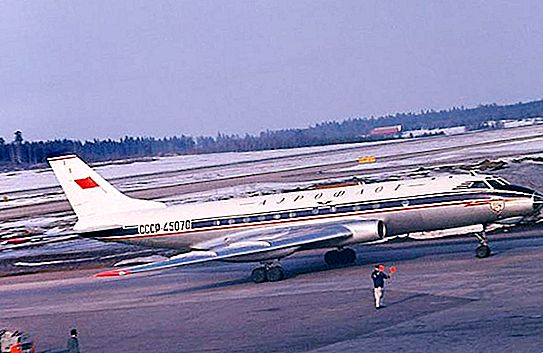
The liner took off from the Ülemiste airport early in the morning, at 8.55, and headed for the Moscow Vnukovo airport. After a few minutes of the flight, the pilots found that the front landing gear was jammed and it remained in a half-assembled state. It was not possible to return to Tallinn Airport, as it was shrouded in dense fog. It was extremely dangerous to make an emergency landing under such conditions. The crew was ordered to fly to Leningrad and try to land there.
The fact is that an emergency landing of an airplane with a faulty landing gear is possible only on a special, plowed dirt strip. It allows you to minimize the risk of sparks during landing, and therefore, to avoid fire or explosion of the aircraft. Such a strip was in Leningrad. In Pulkovo, they immediately took all the necessary measures in order to take an emergency board. In a short time, all emergency services of the airdrome were fully operational.
Over Leningrad
The liner flew up to Leningrad at about 11.00. Pulkovo experts asked the plane to fly over the airport to assess its damage from the ground. A visual inspection confirmed that the front landing gear is in a half-assembled state.
The crew was ordered to prepare for an emergency landing. However, before committing it, it was necessary to develop excess fuel. The plane began to make circles over the city at an altitude of 500 meters.
Meanwhile, the flight engineer Tsarev did his best to free the jammed chassis. To do this, he had to cut a hole in the floor of the cockpit and, using a pole, manually, try to bring the rack to its normal position. All efforts were in vain.
The plane managed to make 8 circles over the city, when at 12.10 it was discovered that there was already not enough fuel for landing in Pulkovo. Suddenly the left engine stalled. Due to complications, the crew was given permission to fly directly over the city center to reduce the distance to the airport.
However, at the very moment when the plane was directly above Smolny, the right engine also stopped. The liner began to quickly lose altitude, and everyone who was at that moment in the center of Leningrad was at risk. In such an emergency, the commander, on the advice of the Chechen co-pilot, a former naval pilot, decides to land directly on the Neva.
Emergency landing
Mostovoi ordered the crew to distract the passengers, and he, alone, began to plan over the city.
The plane flew over Liteiny Bridge at an altitude of 90 meters and managed to pass Bolsheokhtinsky just 40 meters from the water, miraculously not hooking its tall farms. Ahead was the bridge under construction by Alexander Nevsky. When the liner flew over him on a low-level flight, workers from scaffolding jumped in horror into the water.
At the cost of incredible efforts of the commander, the aircraft managed to successfully splash down a few tens of meters to the pillars of the next railway bridge in Finland. Mostovoy is said to have turned gray in these few minutes.
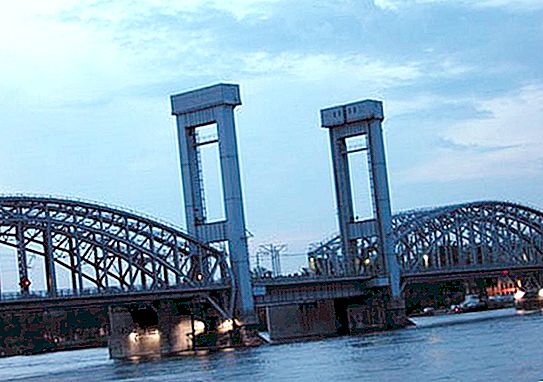
The landing of the Tu-124 on the Neva ended successfully, and the plane remained afloat, but due to damage received during landing, water began to flow into the fuselage. By accident, passing by and miraculously avoiding a collision with an airplane, the old tug boat Burevestnik managed to drag a sinking liner closer to the shore, into the territory of the Severny Press plant. According to another happy coincidence, wooden rafts stood at this place near the coast. The wing of the aircraft lay on these rafts and formed a natural gangway along which all passengers and crew safely went ashore.
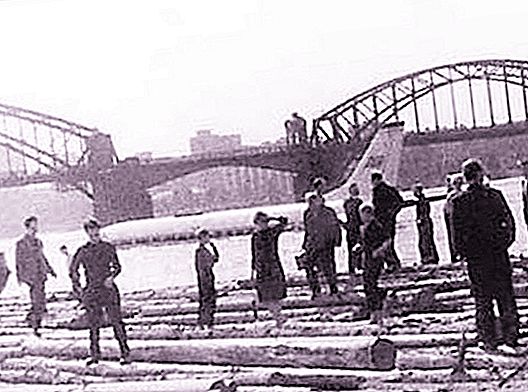
In total, there were 44 passengers on the plane, including two children, and 7 crew members. There was no panic, but, being on the shore, people gradually began to realize that they had recently been in the balance of death. The crew of the plane was immediately sent for interrogation to the KGB, and the passengers were taken to Pulkovo, from where they returned to Tallinn on the first flight.
Causes of the accident
The landing of the Tu-124 on the Neva was the first case of a successful splashdown of a large passenger aircraft. But what was the cause of the accident, which almost turned into a terrible catastrophe?
Tu-124 at that time was the latest brainchild of Design Bureau Tupolev. It was designed and tested in a short time, and therefore had many minor flaws. One of them played a fatal role in the fate of the Estonian side. It turned out that during takeoff in Tallinn, the front landing gear ball bolt fell off from the aircraft, it was then found on the runway. Without this small but important detail, the front landing gear of the aircraft could not assume its normal position, and it jammed. According to experts, a landing with such a malfunction threatened to overturn the car. In such a situation, a successful splashdown of the aircraft may have been the only way to save passengers.
The second reason for the almost unfolded tragedy was the malfunction of the fuel gauge, which issued incorrect data on the amount of fuel on board. This common defect of many airplanes of that time was well known to all pilots, and many of them asked to refuel the aircraft with a little more fuel than expected. However, that did not happen that day. In addition, before the emergency landing it was necessary to work out the maximum amount of fuel, leaving only the smallest one to reach the airport, and here the error in the readings of the device turned out to be fatal.
The fate of the plane
After all the people left the board, a special steamer was used to pump water from the plane. But still he could not cope with the fast flowing water, and soon the Tu-124 sank. The next day, pontoons were brought under the plane, it was lifted from the bottom and towed along the Neva to the west of Vasilyevsky Island, where at that time the military unit was located. After inspection, the aircraft was decommissioned due to damage.
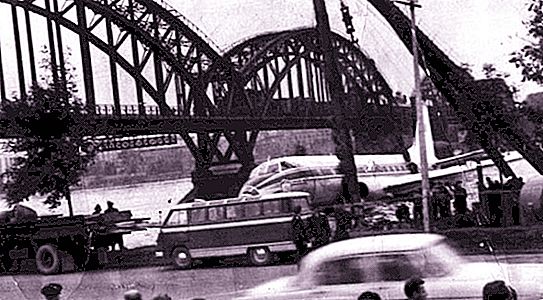
His end was sad. The cabin was cut off and sent as a flight simulator to the Kirsanovskoye flight school, located in the Tambov region. Beautiful soft chairs were sold to everyone at a price equal to the cost of a bottle of vodka. And the fuselage remains rusted for a long time on the shore of the Skipper Channel until it was cut and sold for scrap.
The fate of the crew
Initially, the KGB and the Main Directorate of Civil Aviation regarded Mostovy’s heroic deed as sloppiness, announced a severe reprimand to him, and dismissed him from the squadron. However, due to the noise raised in the foreign press, the authorities changed their anger to mercy. They even wanted to award the commander of the ship with the Order of the Red Star, but the order was never signed. In the end, Khrushchev decided not to reward, but not to punish the pilot.
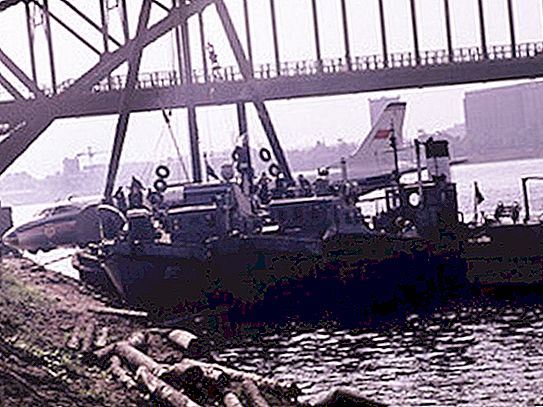
The entire crew was soon again allowed to fly. After some time, the Chechen co-pilot himself became a commander. Mostovoy also continued to work, but already as part of the Krasnodar air squad. In the early 90s, he emigrated with his family to Israel, where he was forced to leave flying activity and work as a simple worker in a factory. He died of cancer in 1997.




